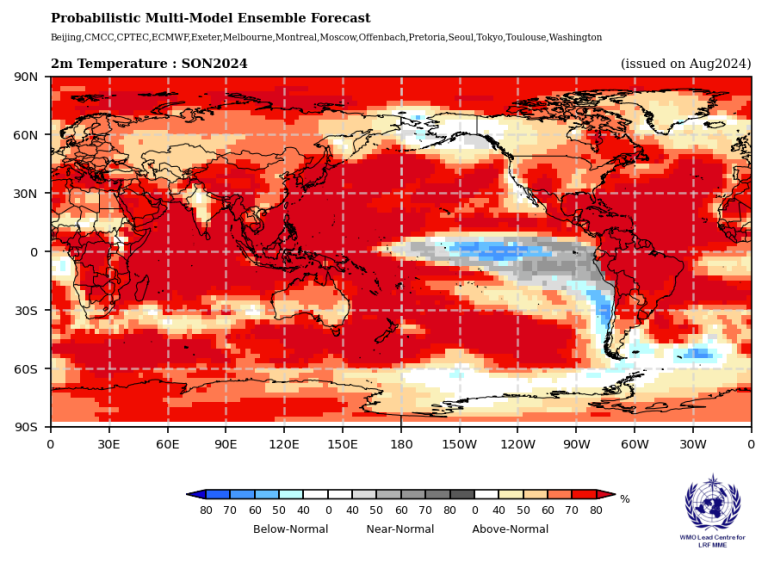There are those—some of them in our nation’s leadership—who still deny climate science.
It’s a little like rejecting the rain forecast when the flood is already up to your knees.
The World Meteorological Organization just issued its State of the Climate report. It is no longer about predictions, because the predictions of past decades are all now coming to pass.
Here is the WMO press release about the report.
Here is the actual WMO report.
World atmospheric carbon-dioxide levels are the highest they have been in 800,000 years, and so are its fellow greenhouse gases methan and nitrous oxide.
Global surface temperatures are the highest they have been since records have been kept. Last year was the single hottest year on record, and the past decade is the single hottest decade on record. And it continues. January 2025 was the hottest January on record.
The oceans, which store massive amounts of heat, are hotter than ever. Each of the past eight years has been the hottest. Oceans take up 90% of the heat rise that is driven by greenhouse gas increases. Without the oceans taking up heat, the atmospheric temperatures would be even higher.
In part because of the heat, sea levels are rising faster than ever—both because warmer water takes up more volume and because glaciers are melting their stored water back into the sea.
The ocean is acidifying at a record pace—and changing the chemistry of the oceans will have significant effects. Says WMO: “The effects of ocean acidification on habitat area, biodiversity and ecosystems have already been clearly observed, and food production from shellfish aquaculture and fisheries has been hit as have coral reefs.”
All that warming and its impacts lead to weather disruptions, and the report says that extreme weather events in 2024 led to the highest level of human disruptions on record.
It takes all kinds of forms. One of them, for Hawai`i residents,
is an ongoing drought that has produced the lowest stream flows since we started keeping
records more than a century ago.
The changes in climate also lead to reductions in food and fishery production, driving food insecurity on a global scale.
The severity of the climate disruption is such that the WMO is now more about responding to the chaos than stopping it. In the foreword to the report, WMO Secretary-General Celeste Saulo said this:
“WMO and the global community are intensifying efforts to strengthen early warning systems and climate services to help decision-makers and society at large be more resilient to extreme weather and climate. We are making progress but need to go further and need to go faster. Only half of all countries worldwide have adequate multi-hazard early warning systems. This must change.”
The World Meteorological Organization is a non-governmental international organizatioTn founded as a place where international researchers could share data. It was created in 1950, but is rooted in the International Meteorological Organization, which dates back to 1873.
It is not just WMO reporting this.
Here is NOAA’s report: https://www.ncei.noaa.gov/access/monitoring/monthly-report/global/202413
And here is the European Union’s Copernicus Program report: https://climate.copernicus.eu/global-climate-highlights-2024
© Jan TenBruggencate 2025







